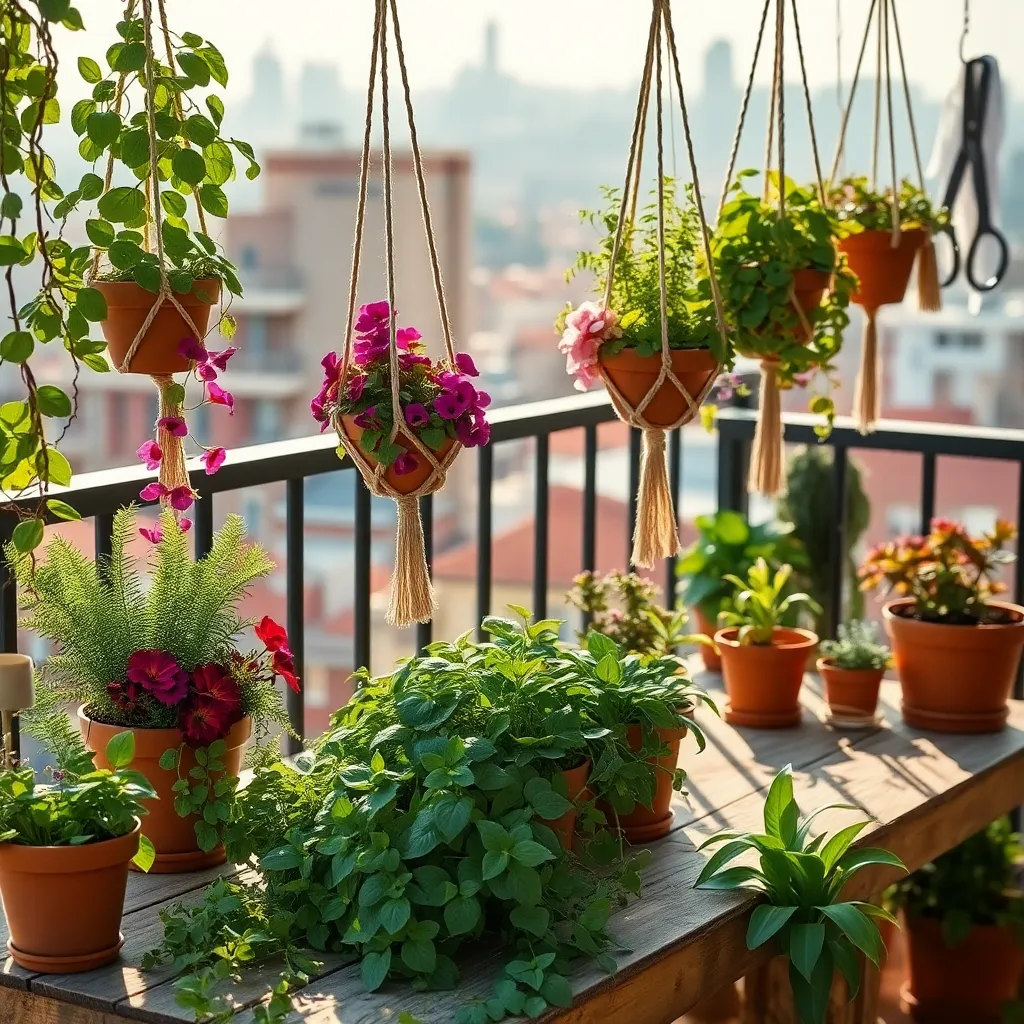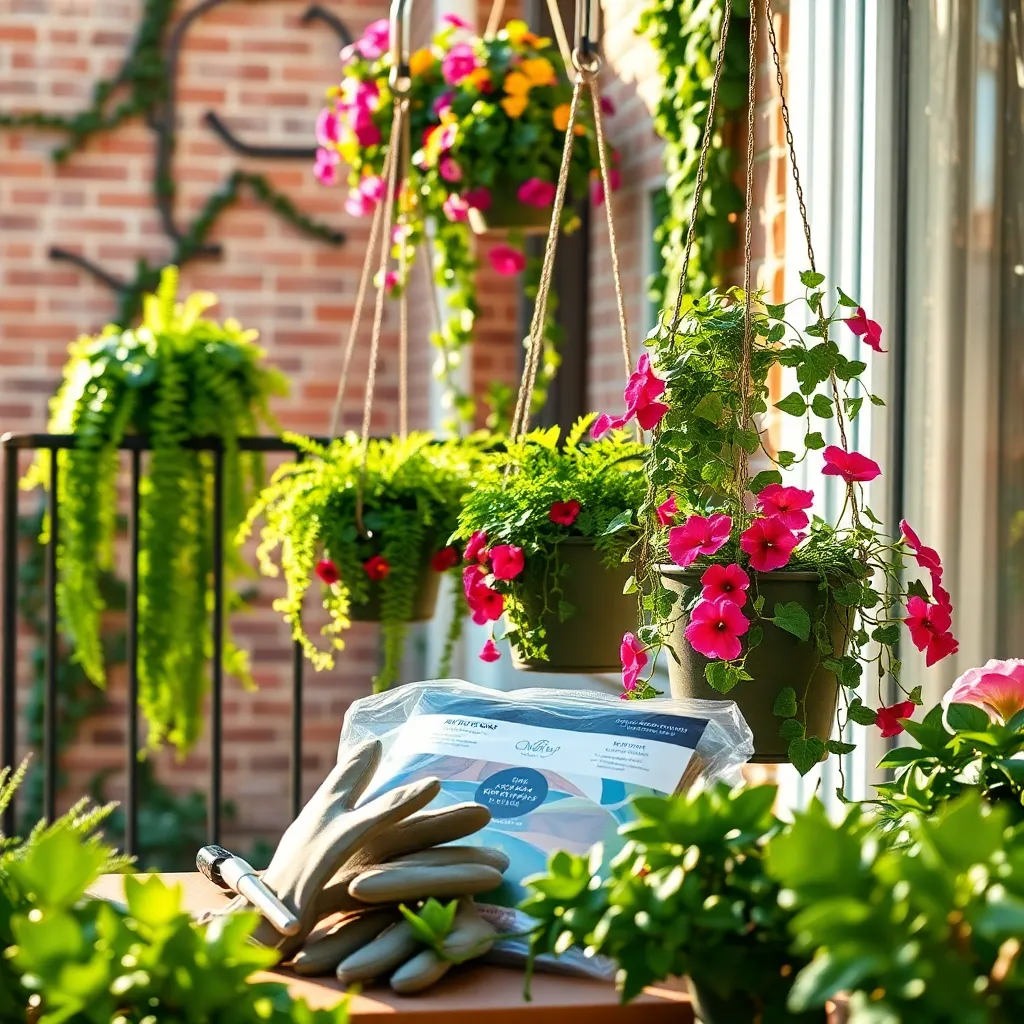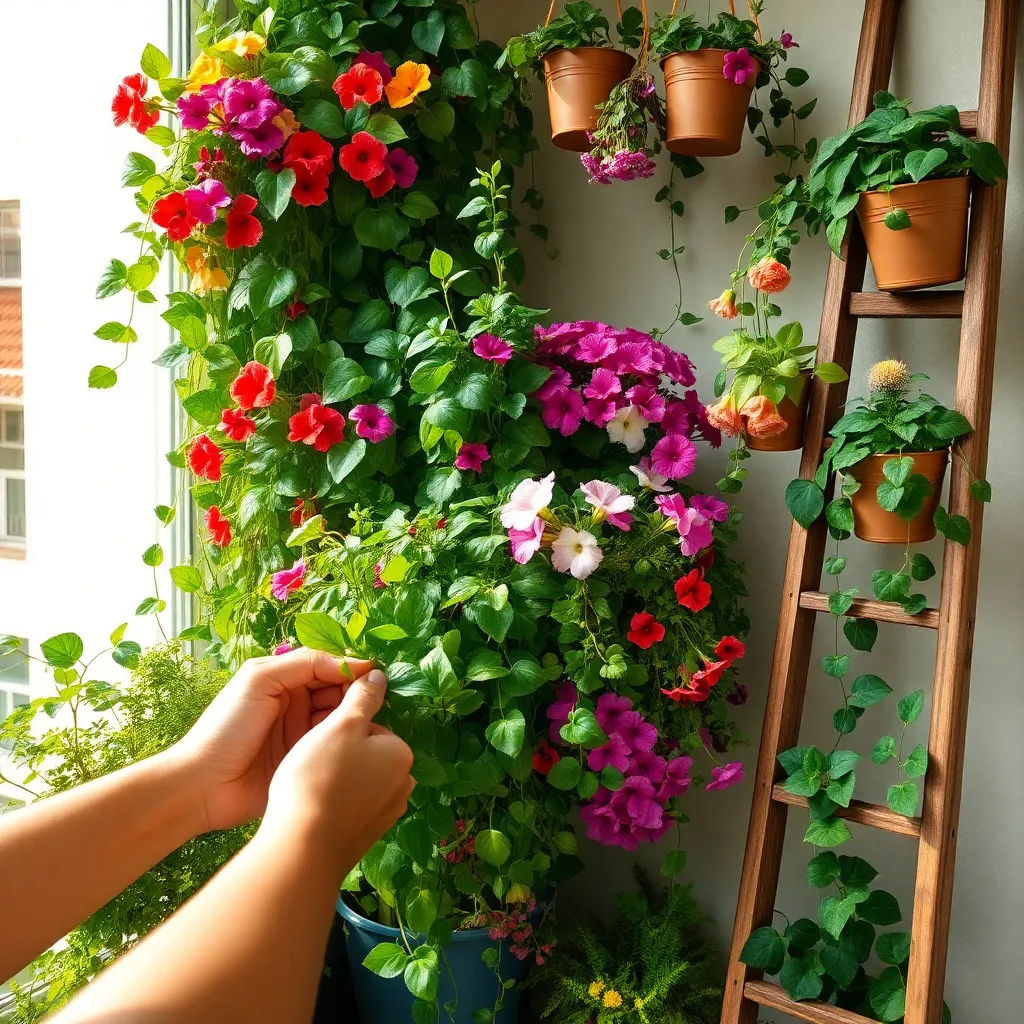Welcome to the world of vertical gardening, where lush greenery meets urban living in the most delightful way. Whether you’re a seasoned gardener or just dipping your toes into the soil, creating a DIY hanging garden in your apartment is a rewarding journey that transforms even the smallest spaces into thriving oases. With limited space being a common challenge for city dwellers, a hanging garden offers an innovative solution that not only beautifies your home but also purifies the air and boosts your mood.
Imagine stepping into your living room and being greeted by an array of vibrant plants cascading down from elegantly arranged shelves or hanging baskets. In this article, you’ll discover how to design a stunning vertical garden that fits seamlessly into your apartment lifestyle, no matter your experience level. We’ll guide you through selecting the right plants, assembling the perfect setup, and caring for your leafy companions, ensuring your hanging garden remains a source of joy and inspiration.
For those just starting their gardening adventure, worry not—this guide will equip you with the knowledge and confidence to nurture your green thumb. Experienced gardeners will find fresh ideas and creative techniques to elevate their existing setups. So, grab your gardening gloves and get ready to explore the endless possibilities of bringing nature indoors, one hanging plant at a time.
Choosing the Perfect Plants

When selecting plants for your DIY hanging garden, consider those that thrive in limited space and indirect light. Succulents, herbs, and trailing vines like pothos are excellent choices for apartment settings.
Choose plants that require minimal watering, which is ideal for indoor hanging gardens. Drought-tolerant species such as string of pearls and air plants are particularly suited for this purpose.
Experiment with different textures and colors to create visual interest in your garden. Pair lush, leafy greens with the delicate shapes of ferns to add depth and variety.
For beginners, herbs like basil, mint, and parsley are not only easy to grow but also useful in the kitchen. These herbs thrive in well-draining soil, so consider using a potting mix designed for herbs and vegetables.
More advanced gardeners might explore tropical plants that require a bit more attention. Ensure these plants receive enough humidity and warmth, mimicking their natural environment, to keep them healthy.
Crafting Your Hanging Planters

Creating your own hanging planters is a delightful way to maximize space in an apartment setting. Begin by selecting a sturdy container that can support both the plant and the soil without risk of falling.
Consider using lightweight materials such as plastic or coir baskets, which are ideal for hanging. These materials not only reduce strain on the hooks but also offer good drainage, which is essential for plant health.
Ensure your planter has adequate drainage holes to prevent waterlogging, which can lead to root rot. If your chosen container doesn’t come with holes, carefully drill or punch some at the bottom.
Once your planters are ready, think about the soil mix. A potting mix with added perlite or vermiculite can improve drainage and aeration, ensuring the roots receive the oxygen they need.
For an advanced tip, consider adding a slow-release fertilizer to the soil mix to provide your plants with sustained nutrition over time. This can be especially beneficial in a hanging garden where frequent fertilization might be challenging.
With your hanging planters crafted, you’re ready to introduce the perfect plants that will thrive in your unique apartment environment. Remember, the joy of gardening comes from experimenting and discovering what works best in your space!
Installing Secure Hanging Fixtures

To ensure your hanging garden remains secure, you need to install fixtures that can support the weight of your planters. Start by identifying a sturdy spot on your ceiling or wall, such as a beam or stud, which can bear the load without risking damage.
Using a stud finder, locate these beams or studs and mark them for accurate drilling positions. A drill with the appropriate bit size is essential for creating clean holes, ensuring your hooks or brackets can be installed snugly.
Choose fixtures that are designed for the weight of your planters, which can range from simple ceiling hooks to more robust wall-mounted brackets. If you’re unsure about the weight capacity, opt for heavier-duty options to avoid any mishaps.
Once the fixtures are securely installed, double-check their stability by gently tugging them. This step is crucial to prevent accidents and ensure your plants remain safely suspended, even with regular watering and maintenance.
Optimizing Light for Growth

Ensuring your plants receive the right amount of light is crucial for their growth. In apartments, finding optimal lighting can be a challenge, but understanding your space’s natural light can make a huge difference.
Start by observing which areas of your apartment receive the most sunlight throughout the day. South-facing windows are typically the brightest and most consistent source of light, ideal for sun-loving plants like herbs and succulents.
If your apartment lacks sufficient natural light, consider using grow lights as a supplement. These lights mimic the sun’s spectrum and can be placed directly above your hanging garden to ensure even light distribution.
Adjusting the distance between your plants and light sources is another key factor. Keep lights between 6 to 12 inches above your plants to prevent scorching and ensure optimal growth conditions.
For beginners, it’s important to monitor how your plants react to their lighting environment. If leaves become pale or leggy, it may indicate insufficient light, while scorched leaves suggest too much direct sunlight or heat.
Advanced gardeners can experiment with timing and light intensity to simulate seasonal changes, which can promote flowering or fruiting. Using a timer can help you automate light exposure, giving plants a consistent daily schedule.
Maintaining Your Hanging Garden

Maintaining your hanging garden requires a regular care routine to ensure thriving plants. Consistency in watering, light exposure, and feeding will help your plants flourish even in compact apartment spaces.
Watering is a critical aspect of keeping your hanging garden healthy. Depending on the plant type and environmental conditions, most hanging plants benefit from a thorough watering every 7 to 10 days. It’s essential to check the soil moisture by sticking a finger an inch deep; if it feels dry, it’s time to water.
In addition to watering, feeding your plants is crucial to sustain their growth. Use a balanced liquid fertilizer diluted to half strength every month during the growing season. For more advanced care, consider using slow-release fertilizer pellets mixed into the soil, providing nutrients over time.
Trimming your plants encourages healthy growth and maintains a neat appearance. Regularly prune dead leaves and spent flowers to boost new growth and prevent disease. For trailing plants, you might need to trim back longer stems to maintain a balanced shape and prevent tangling.
Rotate your hanging baskets every couple of weeks to ensure even light exposure on all sides. This practice prevents plants from leaning towards the light source and promotes uniform growth. Additionally, periodically check for pests like aphids or spider mites, especially on the undersides of leaves, and treat them promptly with insecticidal soap or neem oil if detected.
Conclusion: Growing Success with These Plants
In exploring the ‘DIY Hanging Garden For Apartments,’ we’ve unearthed five essential relationship concepts: nurturing growth, embracing creativity together, building a shared sanctuary, fostering communication through collaboration, and celebrating small achievements. These elements not only enhance your living space but also strengthen the bonds you share with your partner. As you embark on creating your hanging garden, take a moment to discuss and plan the project together, reinforcing your connection through cooperative effort.
To kickstart this journey, choose a plant together this weekend that symbolizes your shared growth and aspirations. This small yet significant step can set the foundation for a thriving relationship and a vibrant home environment.
Remember, relationships, much like gardens, require regular care and attention. Bookmark this article now, ensuring you have a handy reference as you nurture both your garden and your partnership.
Looking ahead, envision your relationship flourishing with resilience and beauty, much like the garden you’ll cultivate. Take these insights to heart, and watch both your personal and shared spaces blossom with love and understanding. Here’s to nurturing not just plants, but the roots of your relationship, for a future that’s lush and full of promise.

